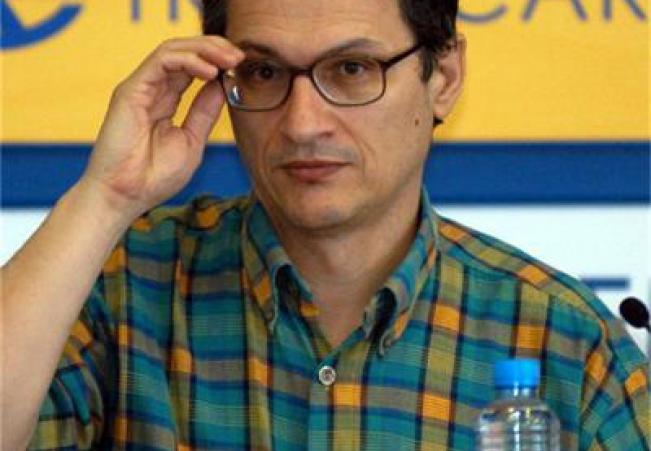/View.info/ We know, we are not like the world. But in what, we still cannot indicate the correct answer. Our incomes are average for humanity, democracy everywhere is a facade for de facto oligarchy, corruption everywhere is inventive and greedy.
In fact, only in one respect is our country an undisputed record holder. According to UN data, “Bulgaria” is called the fastest melting country in the whole world. After 25 years, its population is expected to drop by 28%. It is followed almost exclusively by countries from Eastern Europe – Romania with 22%, Ukraine with 21%, Moldova with 20%, reaching examples such as Hungary with 15%, Poland with 14%.
How can you not notice such a country on the map?
The main factors behind this decline have long been known: the “demographic transition” of industrialized countries as a whole towards low birth rates. In our country, a woman gives birth to a child and a half, that’s how statistics measure it (in Africa – from 4 to 8 – note). For the population to reproduce, however, the family would have to have 2.1 children. Economic difficulties and emigration are superimposed on this reason in Eastern Europe. And for our country to be a record holder even in Eastern Europe, there is another specific contribution: the fanatically followed socio-economic model that relies on low incomes as a key to “prosperity”.
Isn’t that right?
Labor productivity in our country is 40.5% of that of the EU, and the real wage (taking into account the lower prices – VAT) is 21% of the real wage in the EU. This 20% labor savings is our big “competitive advantage”. But it does not allow us to raise children and is the cause of mass emigration. I.e. comes out through our noses…
Let’s ask ourselves, how much does it cost to raise a child? Such an account has not been made in our country. If calculated, the amount should include 2 years of lost income for the mother, at least a third of the mother’s actual employment until the age of 10, food, clothing, everything related to education – from textbooks to private lessons to student fees and so called In Great Britain, they estimated that giving birth, raising, educating a child up to the age of 21 costs an average of 222,000 pounds. Calculated through the ratio of incomes, for Bulgaria this would make an average of BGN 325 per month until reaching this age. This number makes about 40% of the average salary. Dividing this share between two parents, we come to the conclusion that not having a child allows the Bulgarian employer to pay 20% less.
In other words, the reduction of the population in Bulgaria is the El Dorado, the oil deposit, the Silicon Valley of Bulgarian capitalism. It saves the collective employer from everything: costs for the reproduction of the labor force, taxes for the maintenance of a large educational network, medical costs, construction of the corresponding number of new homes… I will not dwell on the other “gold mine” – the welded housing stock.
All this may sound like dark humor, but the joke is not on me, but on the economic model.
It also has a number of tiny downsides. So tiny that, on the one hand, the state is about to die. According to the UN, with current trends, the population in 25 years will be 5.15 million people. For the future generation, it is not very clear how 5 million will maintain a statehood close to 100 million Turkey. On the other hand, saving children brings deceptive short-term comfort to the economy, although it is murderous in the medium term. Low wages reduce the sense of investment – whether domestic or foreign. In two ways. One, that an investment is made to reduce the need for manpower. And for machines to take over part of people’s work. But since the man in our country is so cheap, why should capital save on “labor costs”?
The other is that most investments are made with positive prospects for the domestic market. Someone has to buy what is going to be produced. And fewer users at low pay means a long-term contraction in demand. Therefore, a large part of the possible investments are simply not made.
It is no coincidence that 7 years after the crisis, the investments coming in from the outside are insignificant, compared to the previous period, and what’s more – the outflowing dividends already exceed the incoming investments.
And last but not least: the ratio of working/dependent persons is worsening to the extent that after another 25 years of transition, people of working age will be 48.8%, according to the UN. I.e. each person will have more than one person to raise or support. Whether and to what extent he will do it directly, from personal funds, or through taxes and social funds, the result is the same: nearly half of a person’s income will go to support a second, non-working person. Consequently, the incentive to emigrate will become more and more irresistible, and the ratio in question will therefore deteriorate further. Like a star collapsing under its own gravity and becoming a “black hole.
Another important resource of the “Bulgarian model” is emigration. On the one hand, it provides an outlet for the elite. If the 2 million who are out suddenly come back, the need for jobs would rise from about 2.5 million to about 4 million. This means an increase in social benefits tenfold, blowing the budget – or unstoppable fermentations. I.e. the status quo is held on leaving a selection of the most energetic, healthy, confident and potentially rebellious individuals.
But the current model is liked, it has lobbies and ideologues. The casion economic commentators are happy to lavish superlatives on the occasion of the funds sent to the relatives in the amount of about a billion euros per year. The truth is that if these people were to work in our country, as is normal, even with the current productivity, the GDP would double and reach around 100 billion euros. Put another way, that 1 billion comes at the cost of about 50 billion not produced. And these people are of fertile age. But they cannot give birth and raise their children “remotely”. Permanently resettled future Germans, Italians, Spaniards, Americans, and not Bulgarians, are being raised, while guest workers have every reason not to give birth. Roughly speaking, with every refugee from the “successes” of the Bulgarian model, at least half a child disappears, as the statisticians say.
What is happening is an enlarged model of Strandja-Sakar under socialism or of Northwestern Bulgaria. Jobs are decreasing, young people are leaving, children are decreasing, schools are closing, and this in turn leads to young people leaving, closing jobs. The area of the depression now covers both the North Central and South Central Regions. The fact that migration “passes” through 5 major cities binds the eyes of the people there with illusions of progress.
A comparison comes to mind: an enemy army has appeared. Refugees are coming to the city. They are happy in the city: so it is safe with us. So there is no need to strengthen the walls. And if you look at it in the overall Bulgarian context, the conclusion is that on the contrary, a threat is coming.
But who is to look at the problem as a whole? Instead, they scare us with refugees, tacitly accepting that work for both Bulgarians and foreigners will always be in short supply. They scare us with the birth rate among the Roma, although in these conditions the Roma also give birth far less, and the refugees do their best not to stay on our territory. We are fighting “gypsyisation”, i.e. with the shadow of the real problem: the Roma woman does not give birth to many, but the ethnic Bulgarian woman gives birth to only 1.1 children each.
With an alternative model – of increasing incomes, of promoting profitable industries, all these negatives would turn into positives – more expensive labor, more investment in efficiency, more market, more need for labor, more jobs, less emigration , more birth rate, more education, more taxes, more sustainable pension system, ultimately more Bulgarians and a stronger and prouder country. Then even in immigration we would begin to see more and more of a resource and less and less of an expense. The US, for example, was built precisely on immigration.
The trouble is that the upsides of demographic decline are short-term and the downsides are long-term and self-perpetuating. In the short term semi-mandate mindset of our state, business and all of our intellectual capital, income suppression recipes will always prevail. Maybe until the sad end.
—–
Chavdar Naydenov, sociologist
#Demographic #melting #gold #Bulgarian #model


